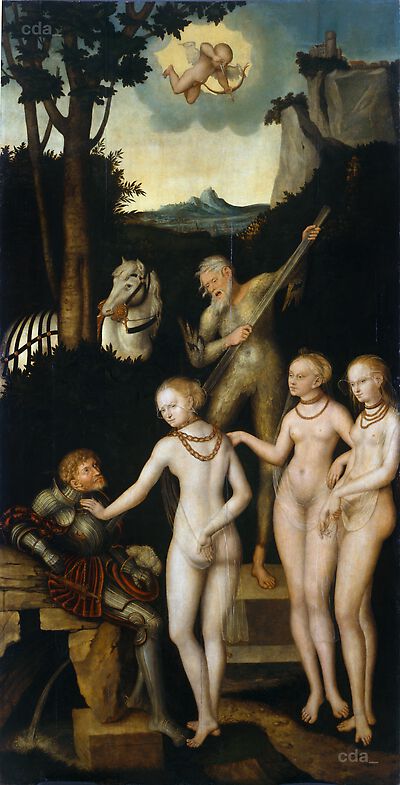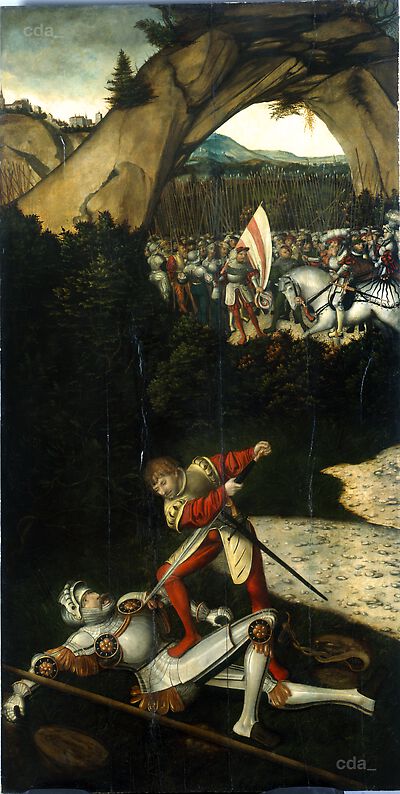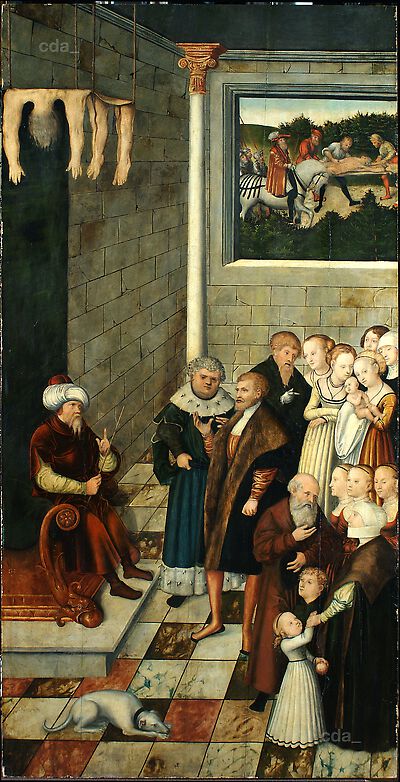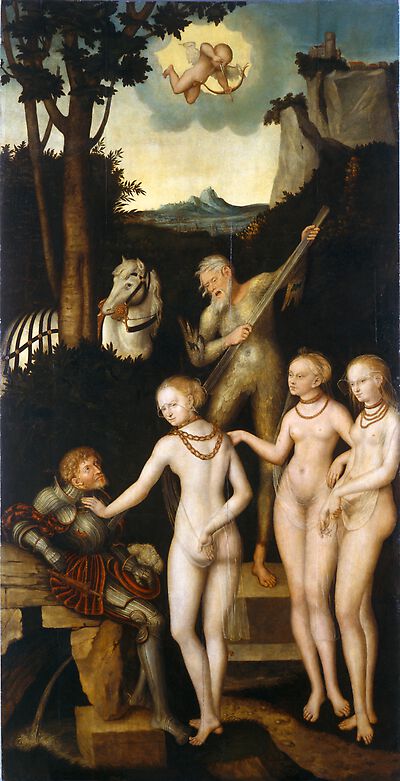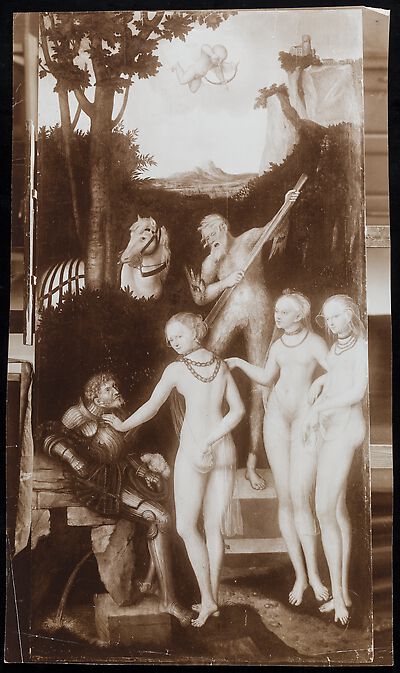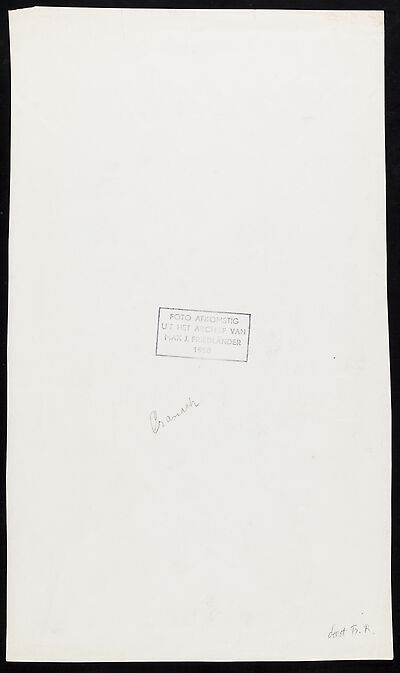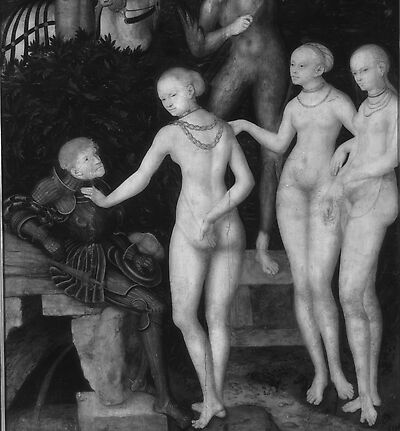- Attributions
-
Workshop Lucas Cranach the Elder
Lucas Cranach the Elder (workshop)
Attributions
| Workshop Lucas Cranach the Elder | [Stiftung Preußische Schlösser und Gärten, Berlin - Brandenburg, revised 2011] [Exhib. Cat. Berlin 1937, no. 116] |
| Lucas Cranach the Elder (workshop) | Lucas Cranach the Younger and Workshop (Lucas Cranach the Younger?) [Sandner et al. 2015, 132] |
| Lucas Cranach the Younger | 'seems more like Lucas Cranach the Younger' |
- Production dates
- about 1540 - 1545
after 1537
Production dates
| about 1540 - 1545 | [Stiftung Preußische Schlösser und Gärten, Berlin - Brandenburg, revised 2011] |
| about 1540 | [Exhib. Cat. Berlin 1937, no. 116] |
| after 1537 | [Friedländer, Rosenberg 1979, 153, No. 409B] |
- Dimensions
- Dimensions of support: 209.5 x 107.2 cm
Dimensions
Dimensions of support: 209.5 x 107.2 cm
[Stiftung Preußische Schlösser und Gärten, Berlin - Brandenburg, revised 2011]
- Signature / Dating
none
- Owner
- Stiftung Preussische Schlösser und Gärten Berlin-Brandenburg
- Repository
- Grunewald hunting lodge
- Location
- Grunewald
- CDA ID
- DE_SPSG_GKI1185
- FR (1978) Nr.
- FR409B
- Persistent Link
- https://lucascranach.org/en/DE_SPSG_GKI1185/
